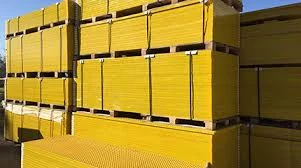
-
 Afrikaans
Afrikaans -
 Albanian
Albanian -
 Amharic
Amharic -
 Arabic
Arabic -
 Armenian
Armenian -
 Azerbaijani
Azerbaijani -
 Basque
Basque -
 Belarusian
Belarusian -
 Bengali
Bengali -
 Bosnian
Bosnian -
 Bulgarian
Bulgarian -
 Catalan
Catalan -
 Cebuano
Cebuano -
 China
China -
 China (Taiwan)
China (Taiwan) -
 Corsican
Corsican -
 Croatian
Croatian -
 Czech
Czech -
 Danish
Danish -
 Dutch
Dutch -
 English
English -
 Esperanto
Esperanto -
 Estonian
Estonian -
 Finnish
Finnish -
 French
French -
 Frisian
Frisian -
 Galician
Galician -
 Georgian
Georgian -
 German
German -
 Greek
Greek -
 Gujarati
Gujarati -
 Haitian Creole
Haitian Creole -
 hausa
hausa -
 hawaiian
hawaiian -
 Hebrew
Hebrew -
 Hindi
Hindi -
 Miao
Miao -
 Hungarian
Hungarian -
 Icelandic
Icelandic -
 igbo
igbo -
 Indonesian
Indonesian -
 irish
irish -
 Italian
Italian -
 Japanese
Japanese -
 Javanese
Javanese -
 Kannada
Kannada -
 kazakh
kazakh -
 Khmer
Khmer -
 Rwandese
Rwandese -
 Korean
Korean -
 Kurdish
Kurdish -
 Kyrgyz
Kyrgyz -
 Lao
Lao -
 Latin
Latin -
 Latvian
Latvian -
 Lithuanian
Lithuanian -
 Luxembourgish
Luxembourgish -
 Macedonian
Macedonian -
 Malgashi
Malgashi -
 Malay
Malay -
 Malayalam
Malayalam -
 Maltese
Maltese -
 Maori
Maori -
 Marathi
Marathi -
 Mongolian
Mongolian -
 Myanmar
Myanmar -
 Nepali
Nepali -
 Norwegian
Norwegian -
 Norwegian
Norwegian -
 Occitan
Occitan -
 Pashto
Pashto -
 Persian
Persian -
 Polish
Polish -
 Portuguese
Portuguese -
 Punjabi
Punjabi -
 Romanian
Romanian -
 Russian
Russian -
 Samoan
Samoan -
 Scottish Gaelic
Scottish Gaelic -
 Serbian
Serbian -
 Sesotho
Sesotho -
 Shona
Shona -
 Sindhi
Sindhi -
 Sinhala
Sinhala -
 Slovak
Slovak -
 Slovenian
Slovenian -
 Somali
Somali -
 Spanish
Spanish -
 Sundanese
Sundanese -
 Swahili
Swahili -
 Swedish
Swedish -
 Tagalog
Tagalog -
 Tajik
Tajik -
 Tamil
Tamil -
 Tatar
Tatar -
 Telugu
Telugu -
 Thai
Thai -
 Turkish
Turkish -
 Turkmen
Turkmen -
 Ukrainian
Ukrainian -
 Urdu
Urdu -
 Uighur
Uighur -
 Uzbek
Uzbek -
 Vietnamese
Vietnamese -
 Welsh
Welsh -
 Bantu
Bantu -
 Yiddish
Yiddish -
 Yoruba
Yoruba -
 Zulu
Zulu
Exploring Effective Strategies for Efficient FRP Laundering and Maintenance Techniques
The Importance of FRP Launder Systems in Modern Industries
In recent years, the demand for advanced materials and systems in various industries has led to the increased utilization of Fiber Reinforced Plastic (FRP) technology. Among the numerous applications of FRP, launder systems have emerged as critical components in processes involving the transportation of liquids, particularly in mining, wastewater treatment, and chemical processing. Understanding the significance and advantages of FRP launders can provide insights into why they are preferred in today’s industrial applications.
FRP launders are channels or troughs constructed from composite materials that primarily consist of a polymer matrix reinforced with fibers, usually glass or carbon. This combination results in a lightweight yet durable structure, making FRP the ideal choice for environments where traditional materials, such as metal or concrete, may falter due to corrosion, abrasion, or chemical attack. Industries that handle corrosive substances find FRP launders particularly beneficial, as they offer a much longer lifespan and reduced maintenance costs compared to traditional materials.
The Importance of FRP Launder Systems in Modern Industries
The lightweight nature of FRP also provides significant logistical benefits. Unlike conventional launder systems that require heavy machinery for installation, FRP launders can be easily transported and installed without the need for extensive support structures. This can lead to decreased construction times and lower labor costs, making them a cost-effective option in both new constructions and retrofitting projects.
frp launder

Moreover, FRP launders can be engineered to meet specific design requirements. Their customizable nature allows for various shapes, sizes, and configurations tailored to the unique needs of different processes. This flexibility ensures efficient liquid flow and minimizes operational bottlenecks. Engineers can design the launder system to optimize retention time, promote effective sedimentation, or enhance separation processes, providing a significant advantage in various applications.
Environmental considerations also play a role in the rising popularity of FRP launders. As industries aim to reduce their ecological footprint, the durability and longevity of FRP systems contribute to sustainability. By reducing the frequency of replacements, companies decrease waste and resource consumption, aligning with environmental stewardship goals.
However, despite the many benefits, it is crucial to ensure proper installation and maintenance of FRP launder systems. While the material itself is resilient, factors such as improper handling, installation flaws, or exposure to extreme conditions beyond the material’s specifications can lead to performance issues. Thus, engaging trained professionals during installation and adhering to manufacturer guidelines for maintenance is essential.
In conclusion, the adoption of FRP launder systems is a testament to the advancements in material science and engineering. Their corrosion resistance, lightweight nature, customization options, and environmental benefits make them a preferred choice in various industries. As businesses continue to seek out ways to enhance efficiency and sustainability, the role of FRP launders is likely to expand, paving the way for a future where modern manufacturing processes are more resilient, efficient, and environmentally friendly. The ongoing evolution in FRP technology promises exciting developments that will further optimize industrial applications in the years to come.
Latest news
-
Exploring the Benefits of Top Hammer Drifter Rods for Enhanced Drilling PerformanceNewsJun.10,2025
-
High-Precision Fiberglass Winding Machine for GRP/FRP Pipe Production – Reliable & Efficient SolutionsNewsJun.10,2025
-
FRP Pipes & Fittings for Shipbuilding - Corrosion-Resistant & LightweightNewsJun.09,2025
-
Premium FRP Flooring Solutions Durable & Slip-ResistantNewsJun.09,2025
-
Premium Fiberglass Rectangular Tanks Durable & Lightweight SolutionNewsJun.09,2025
-
Tapered Drill String Design Guide Durable Performance & UsesNewsJun.09,2025









